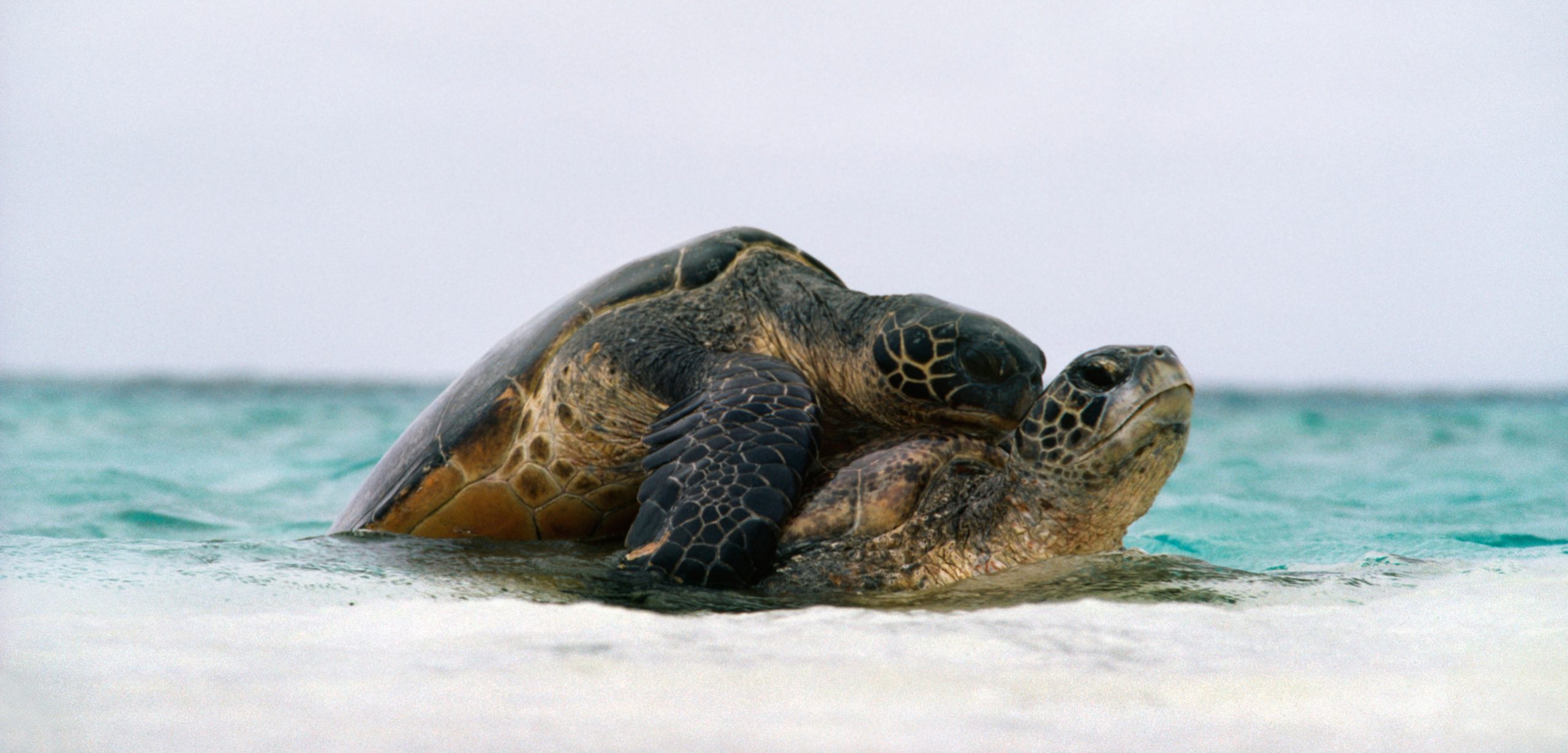Turtle Voyeurs
An eye in the sky has revealed secrets of sea turtle courtship.
Article body copy
Drones aren’t always about war. Sometimes they’re about love.
Or at least courtship.
A team of researchers recently discovered this when they used drones to study population densities of endangered Kemp’s ridley sea turtles in the Gulf of Mexico. By accident, they also ended up documenting the courtship rituals of a different species, green turtles—the first time this has been done with this technology.
Elizabeth Bevan, a doctoral student at the University of Alabama at Birmingham, is enthusiastic about the research. “It’s not that often you get to talk about turtle porn,” she says.
Bevan says she and fellow researcher Erica Navarro, from Gladys Porter Zoo in Brownsville, Texas, first observed the turtle behaviors in an unusual moment: while they were hiding under a sheet. It was a sunny day, so the researchers had draped a black bed sheet over themselves to keep the glare off of the video feed from their drone. During one flight, they noticed a turtle that seemed … odd.
“I said, ‘Hang on a second, that doesn’t look right,’” Bevan recalls. The shell seemed shiny—more reflective than it should have been for an animal swimming just below the surface. They lowered the drone closer to the water to get a better look.
That’s when the truth revealed itself. “We realized we were looking at a male on top of a female, and the female was underwater,” Bevan says.
Over the next few weeks, they observed numerous other paired green turtles, along with their courtship behaviors. Both the male and female turtles would circle around each other, bite their potential mate’s necks and rear flippers, and rub their gular (throat) regions together. The males were seen checking out the female’s cloaca and attempting to mount. Actual copulations were witnessed seven times.
They even observed two males going through the whole routine, ending with an attempted mounting.
Most of this behavior—other than that of the two males—has been seen before, but never by drone and only in limited contexts from boats, in zoos, or in the water via snorkeling.
By contrast, the drones were able to travel up to four kilometers from shore and hover directly above interacting turtles. “We saw things in a much better perspective,” Bevan says.
Bevan says this research opened up the opportunity to answer additional questions about mating behavior—for example, when do males come to join females for mating periods and where do they come from? There are also opportunities to learn if these behaviors vary from species to species. “If the Kemp’s ridley turtles have the same behaviors, that would indicate they serve an important function to turtle reproduction that has been conserved across species,” she says.
Bevan and her colleagues are already onto the next phase of their research, this time using a more advanced drone that can travel a bit farther out to sea. “We’re hoping we can use that to lengthen our survey time,” she says—and maybe to catch more turtles in the act.

